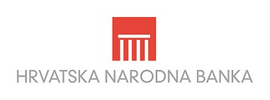Table H11 Indices of harmonised competitiveness indicators
The HCIs are conceptually equivalent to the real EER of a currency. They are calculated on the basis of weighted averages of bilateral exchange rates vis-à-vis the currencies of the trading partners of each euro area country and are deflated by appropriate cost or price indices. The methodology is based on the following elements.
Trade basis
The weights are based on bilateral data on trade in manufactured goods, as defined in Sections 5 to 8 of the Standard International Trade Classification (i.e. excluding agricultural, raw material and energy products) and trade in services (Total EBOPS Services) for the periods 1995-97, 1998-2000, 2001-03, 2004-06, 2007-09, 2010-12, 2013-15, 2016-18 and 2019-21.
Weighting method
The weights incorporate information on both exports and imports. Import weights are the simple shares of each partner country in the total imports. Exports are double-weighted in order to account for “third-market effects”, i.e. to capture the competition faced in foreign markets from both domestic producers and exporters from third countries. The final overall weights of each partner country are obtained as the weighted average of the export and import weights.
Eight sets of weights are currently available, based on trade data for the periods 1995-97, 1998-2000, 2001-03, 2004-06, 2007-09, 2010-12, 2013-15, 2016-18 and 2019-21. The HCIs are chain-linked at the end of each three-year period. The weights are updated every three years in order to reflect recent developments in the pattern of international trade.
Trading partners
The HCIs of a euro area country based on consumer price indices, producer price indices, GDP deflators, and on unit labour costs are calculated against three groups of trading partners:
- vis-à-vis the other 19 euro area countries;
- vis-à-vis the other 19 euro area countries and the group of 12 trading partners which comprises Australia, Canada, Denmark, Hong Kong, Japan, Norway, Singapore, South Korea, Sweden, the United Kingdom, Switzerland and the United States;
- vis-à-vis the other 19 euro area countries and the group of 18 trading partners, which comprises the group of 12 plus Bulgaria, China, Czech Republic, Hungary, Poland and Romania.
The HCIs based on consumer prices and GDP deflators are additionally calculated:
- vis-à-vis the other 19 euro area countries and the group of 41 trading partners, which comprises the group of 18 plus Algeria, Argentina, Brazil, Chile, Colombia, Iceland, India, Indonesia, Israel, Malaysia, Mexico, Morocco, New Zealand, Peru, the Philippines, Russia, Saudi Arabia, South Africa, Taiwan, Thailand, Turkey, Ukraine and the United Arab Emirates.
Deflators
- consumer price indices: for European countries, the all-items Harmonised Index of Consumer Prices as published by Eurostat is used; for the other trading partners, all-item national consumer price indices are used;
- producer price indices: for European countries, the Producer Price Index – domestic sales in the manufacturing sector, classified according to the NACE Rev.2 classification as published by Eurostat – is used; for the other trading partners, these data are derived from data published by the BIS;
- GDP deflators: for European countries, GDP deflators are derived from their quarterly national accounts as published by Eurostat; for the other trading partners, they are derived from their national accounts as published by the BIS, OECD and IMF;
- unit labour costs in the total economy: the ratio of total compensation per employee to labour productivity, with labour productivity measured as GDP at constant prices divided by the total number of persons employed; for European countries, the available data are derived from their quarterly national accounts as published by Eurostat; for the other trading partners, these data are derived from their national accounts as published by the BIS, OECD and IMF.
